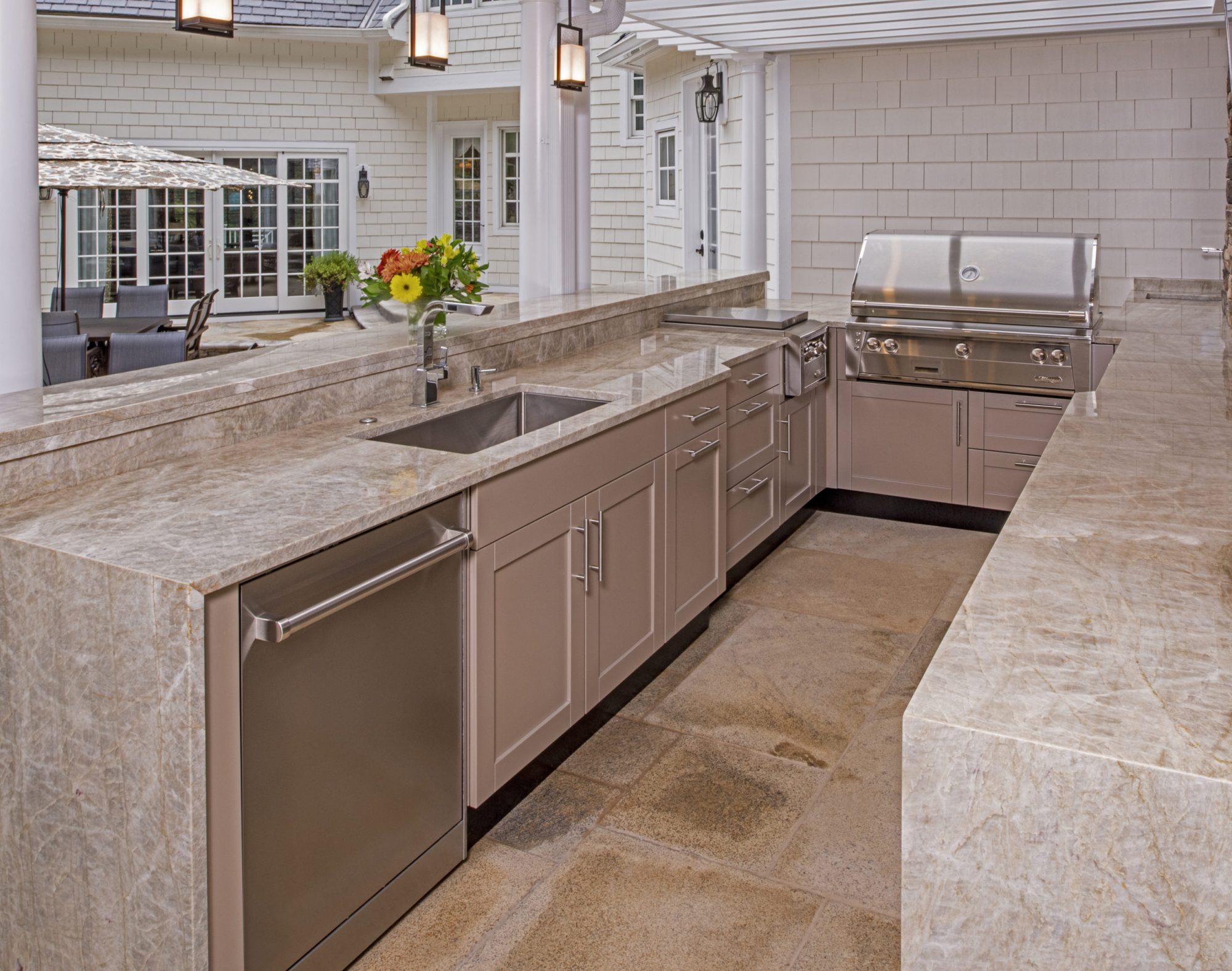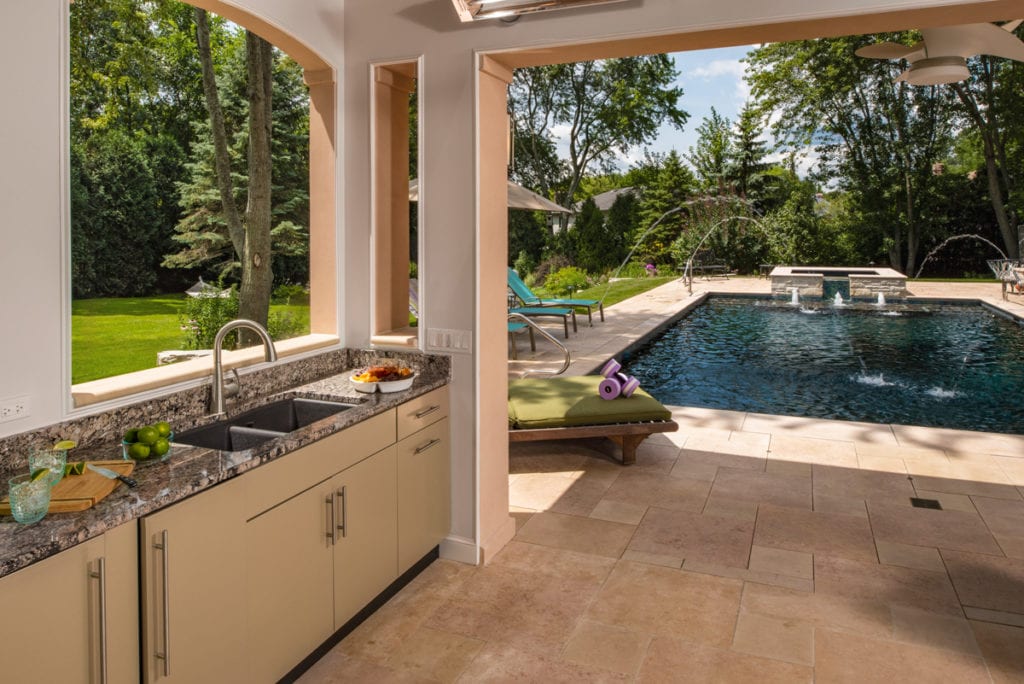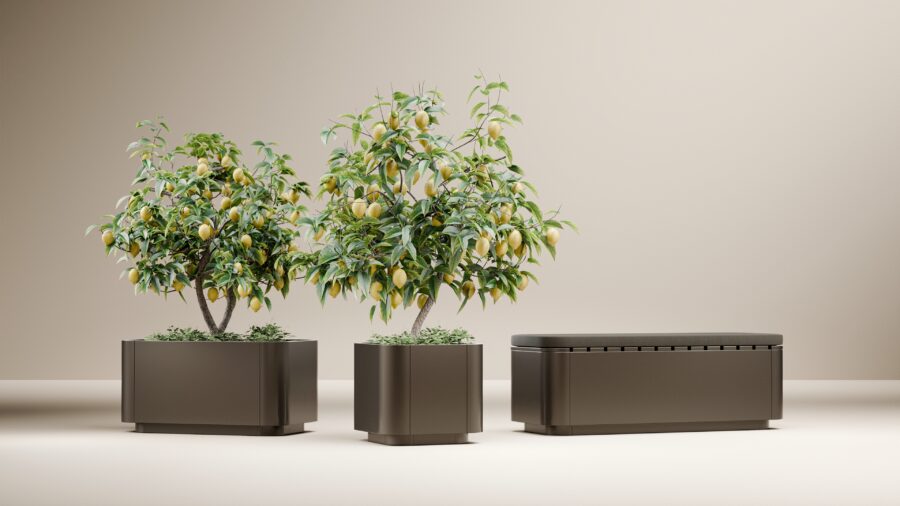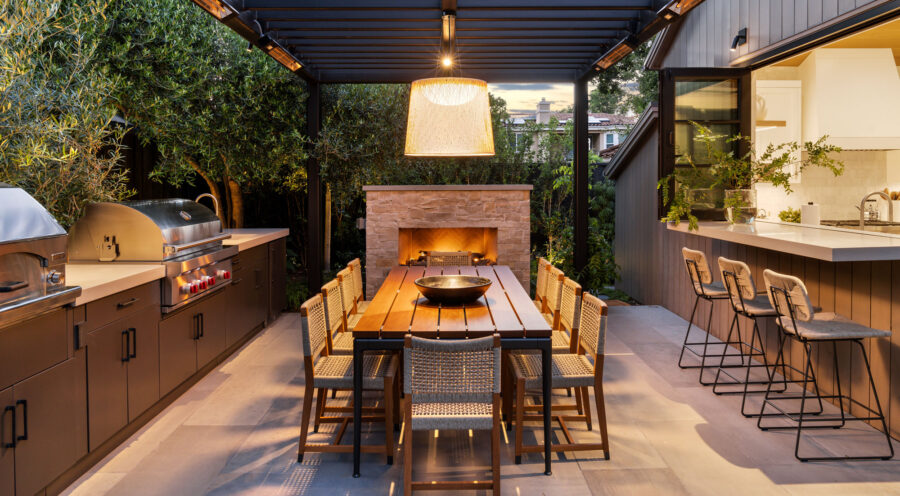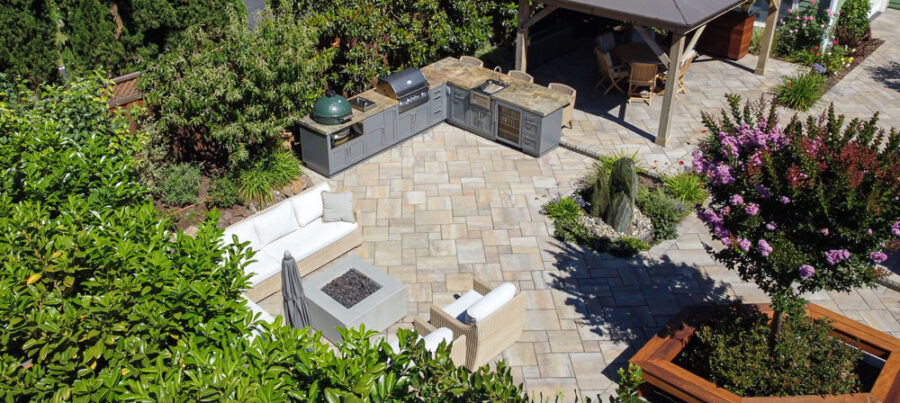This post was originally published on April 15, 2019 and updated on July 8, 2020 to reflect the most recent information.
Not all custom outdoor kitchens are alike or built the same way. Their structure and base vary as do the materials they are comprised of, enabling them to endure high temperatures and harsh weather conditions. If you’re building the kitchen on a deck, make sure the deck is made of treated lumber or another type of wood that will last in the outdoor entertaining area.
The construction process of an outdoor kitchen can be complicated. Construction options include concrete block, brick, wood, or stainless steel. Based on these choices, the level of complexity during construction also varies, most often requiring a trade profession to install them.
Once they’ve selected the outdoor kitchen layout and design of their choice – concrete, brick, wood-framed or stainless steel securing a professional installer will ensure safety and durability.
Related – 10 Things to Consider When Designing an Outdoor Kitchen
The common denominator driving your client’s use and enjoyment of an outdoor kitchen space is the timeline of the kitchen design. This depends on the outdoor kitchen‘s materials. Our expert design team is here to help design the perfect outdoor kitchen. With over 20 years of experience, let our team help with your next outdoor kitchen project.
Let’s take a look at a few of the most popular outdoor kitchen options:
Concrete Block or Brick Masonry
Two traditional options are to build the outdoor kitchen design out of either concrete block or brick masonry. They require a solid, level concrete slab.
Both options are permanent so determining the optimal outdoor kitchen area is key. Construction can be time-consuming and may incur additional costs along the way so budget monitoring is a must. Additionally, consider it may take weeks, sometimes months to construct an outdoor space, with a cement mixer, lots of foot traffic and a variety of tools, bricks and mortar taking its toll on your yard area.
Cleaning brick and stone of the grease and other trappings of use is nearly impossible – your outdoor kitchen area will never look as good as it does the day before you use it!
Wood Frame
A wood-framed base often uses pressure-treated pine because it holds up better under the extreme heat emitted by a grill and is less likely to rot. It is best to use a cement backer board in order to protect the wood frame from heat and water. Despite installing a blocker board, fire safety remains a concern.
Wood-frame outdoor kitchens require decorative concrete panels, stucco, stone, tile, or brick veneers. Just like concrete block and brick, wood-frame kitchen construction allows for customization to create any size or shape layout to accommodate a range of appliances and accessories. There is a considerable degree of maintenance to prevent rot and sustain this type of outdoor kitchen design. Again, similar time frames of days to weeks like the concrete and brick options.
On the downside, water tends to seep into the frame and panels causing discoloring, staining and eventually mold and rot.
Metal Stud Frame
Outdoor kitchens constructed with metal stud frames and cement board construction are another option for landscape design. The framing requires some type of front finish, which can be cement, wood or steel. Installation requires days, sometimes weeks, with regular maintenance and eventual replacement considerations.
The metal frame helps alleviate the water issues of the wood-frame outdoor kitchen frame, but the panels that span the frame are susceptible to the same water damage.
Stainless Steel
Stainless steel outdoor kitchens can be designed in a variety of layouts from a simple, single run of cabinets to a U-shaped layout with an island creating an elaborate configuration that complements a larger outdoor living space. ADA-compliant, stainless steel outdoor kitchen cabinets easily accommodate a variety of appliances including electric grills and, because they are non-combustible, do not require insulation jackets.
Stainless steel cabinets can be placed against a wall, easily installed on a patio, deck or on a rooftop. The best part is the installation timeframe, which can be within just one afternoon! Add to that, a variety of cabinet door styles and plenty of color options – including wood grain finishes – that can be powder coated onto the stainless steel. Consider including one of our stainless steel outdoor cabinet pulls to give a finished look to your cabinet door. The powder coating adds to the longevity of the stainless steel while reducing the maintenance and replacement factors exhibited by rotting wood and crumbling mortar
Countertops
The two elements that bring together an outdoor or indoor kitchen are the countertops and cabinets. Countertops can be made from granite, tile and marble. We recommend Dekton® by Cosentino for your outdoor kitchen countertops due to their strength, highly resistant to scratches, UV resistant and requires very little maintenance. Counter space is vital for food preparation if you plan on doing a lot of outdoor cooking and entertaining in the backyard.
Outdoor Kitchen Layouts
A well planned outdoor kitchen idea should have functional zones for food prep, cooking, and entertaining family, friends and guests. Designing the layout this way helps create a natural flow for entertaining and cooking. Typical kitchen layouts for the outdoors include an outdoor kitchen island, U shape and L shape.
Interested in talking with a Danver Stainless Outdoor Kitchens design professional about designing a new outdoor living area? Our experts are ready to help transform the living space outdoors.
This article is based on industry knowledge and research by outdoor kitchen design professionals, including our in-house experts and engineers with decades of experience.Our goal at Danver is to provide factual information on relevant topics to help readers make informed decisions about their outdoor living spaces.
This article uses trusted sources with references hyperlinked to the source material.

